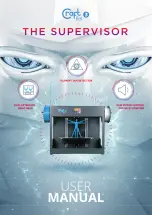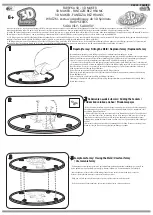
LIQUID CRYSTAL 3D-PRINTER
Model: LC Precision
We hereby declare that the product above is in compliance with the essential
requirements of the following:
Low Voltage (LV) Directive 2009/95/EC, 2014/35EU. Electromagnetic Compa-
tibility Directive(EMC), 2004/108/EC,2014/30/EU.
Restriction of the use of certain hazardous substances (RoHS) Directive,
2011/65/EU Commission Regulation (EU) No. 453/2010 and IEC 60950-1 Sa-
fety of ITE
Technical Documentation is stored at the manufacturer’s address above.
Date of Issue: 15. January 2018
Place of Issue: Peterborough
Amanda Keating
Director
Congratulations!
You have just purchased a new type of 3D printer
using Daylight Polymer Printing (DPP) technology.
This is a patent applied-for method of image crea-
tion that hardens liquid with the normal visible light
emitted from an LCD screen. This revolutionary
system is a new method of Additive Manufacturing
that uses the same intensity and part of the spec-
trum that we use to see. This is the energy provi-
ding source that initiates the free radical or catio-
nic polymerisation necessary to change the liquid
photopolymer resin into your hardened object. The
light emitted from the screen is not modified and
the images are safe for viewing.
These are some of the advantages of DPP techno-
logy:
i) Low cost- We use high resolution low cost LCD
screens that are widely available in monitors,
tablets, mobile phones and televisions. These
provide phenomenal value for money, which
we pass onto you.
ii) Reliable- Because we use visible light which
is designed to function with LCDs and not UV
light which shortens LCD screens life.
iiI) Very large scale- The screen lights every pixel,
which in turn exposes every voxel, so you can
create large areas of custom product simul-
taneously. As the format grows this makes it
much more efficient than all alternative means.
iv) Very low energy usage- It uses the amount of
electricity to run a tablet, this is an order of
magnitude lower than that required to operate
a laser or a digital light projector.
v) Low adhesion at the build interface- the heat
created by the screen is very low and the small
amount of initiation energy in the polymrisation
creates very little attraction to the vat film.
vi) Limited over-exposure- Using this low intensity
visible light, the energy is dissipated very quic-
kly, it either strikes a photoinitiator and creates
a free radical or it loses all the energy hitting
solid material, so there is very limited ability to
over-expose and create solid parts where you
don’t want them.
USER
MANUAL
EU DECLARATION
OF CONFORMITY
NEW DAYLIGHT TECHNOLOGY
HIGH RESOLUTION
3D PRINTER
Manufacturer
Photocentric Ltd
Cambridge House, Oxney Road
Peterborough, PE1 5YW, UK
Year of CE Marking: 2018
1
2
PRECISION
PRECISION
































